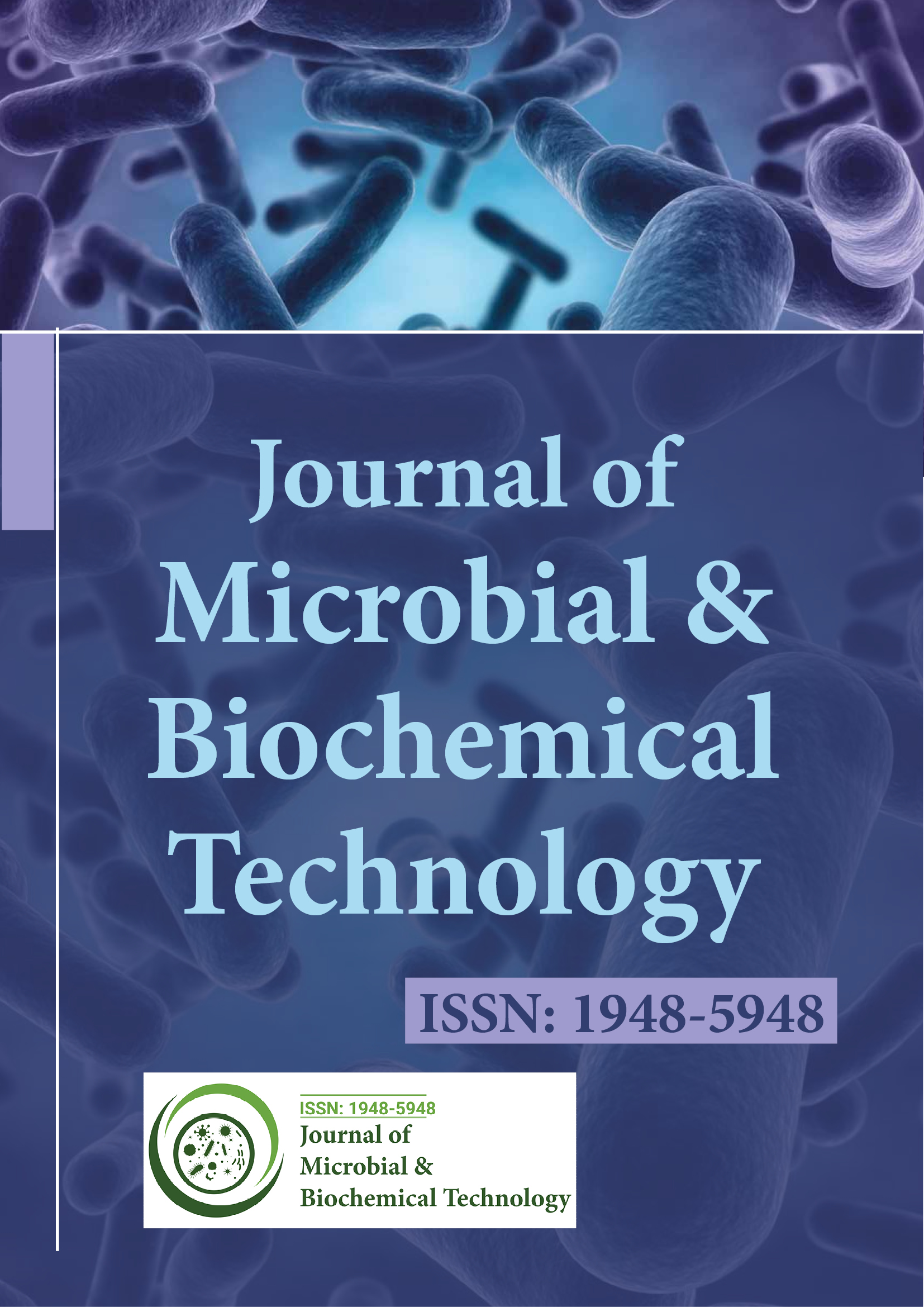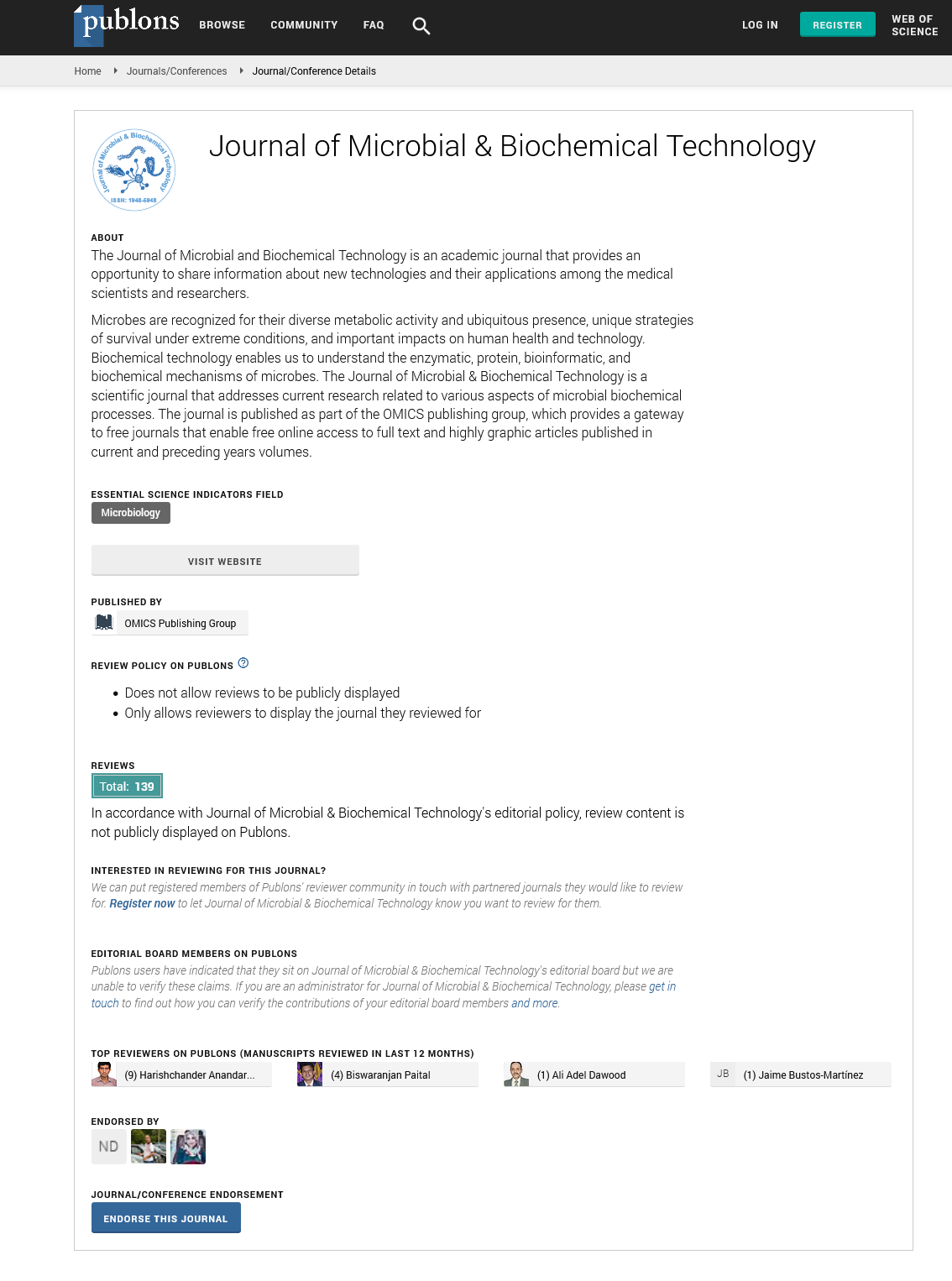Indexed In
- Academic Journals Database
- Genamics JournalSeek
- Academic Keys
- JournalTOCs
- China National Knowledge Infrastructure (CNKI)
- Scimago
- Access to Global Online Research in Agriculture (AGORA)
- Electronic Journals Library
- RefSeek
- Directory of Research Journal Indexing (DRJI)
- Hamdard University
- EBSCO A-Z
- OCLC- WorldCat
- SWB online catalog
- Virtual Library of Biology (vifabio)
- Publons
- MIAR
- University Grants Commission
- Geneva Foundation for Medical Education and Research
- Euro Pub
- Google Scholar
Useful Links
Share This Page
Journal Flyer

Open Access Journals
- Agri and Aquaculture
- Biochemistry
- Bioinformatics & Systems Biology
- Business & Management
- Chemistry
- Clinical Sciences
- Engineering
- Food & Nutrition
- General Science
- Genetics & Molecular Biology
- Immunology & Microbiology
- Medical Sciences
- Neuroscience & Psychology
- Nursing & Health Care
- Pharmaceutical Sciences
Short Communication - (2021) Volume 0, Issue 0
Production of Peanut Milk and Products Containing Peanut Milk
Bender John*Received: 07-Dec-2021 Published: 28-Dec-2021
Abstract
Protein deficiency among poor people is a common problem in developing countries. This issue necessitates the implementation of policies that encourage the consumption of low-cost, high-quality vegetable protein. The production of two peanut-based beverages has been sought as a solution to the problem due to their adequate source of protein, wide availability, and low cost.
Introduction
Protein deficiency among poor people is a common problem in developing countries. This issue necessitates the implementation of policies that encourage the consumption of low-cost, high-quality vegetable protein. The production of two peanut-based beverages has been sought as a solution to the problem due to their adequate source of protein, wide availability, and low cost. Total titratable acidity, pH, moisture content, proteins, and ashes from "peanut milk" enriched with umbu and guava pulps were also measured and stored at a temperature of 18 °C (0.4 F) for 150 days, with follow-ups every 30 days. The acidity of the beverage enriched with umbu pulp was superior to the acidity of the beverage enriched with guava pulp; however, the protein amount decreased in the studied formulations during storage [1,2].
The emphasis has shifted from preparing inexpensive milk-like beverages that are very nutritious but lack consumer appeal to using peanut milk or peanut protein isolates as an animal milk extender without changing flavour, developing more appealing fermented products, and precipitating proteins from milk to produce "tofu" and cheese analogues. Using physical and chemical treatments, great care has been taken to improve the milk's stability, sensory properties, and shelf-life. Several efforts have been made to supplement the products. Aflatoxin can now be removed from peanut milk using Flavobacterium aurantiacum as a biodegradater, thanks to recent advancesIt has also been used as a liquid coffee whitener [3]. Despite all of these advancements and publications, there is still a need for much more diverse research to definitively overcome the stability, nutty flavour, and sensory issues that are always encountered when producing peanut milk and some peanut milk-based products [4].
The effects of separately and in combination fermentation of aqueous extracts of peanuts (peanut milk) with Lactobacillus delbrueckii ssp. bulgaricus and Streptococcus salivarius ssp. thermophilus on selected chemical and sensory qualities were investigated. During fermentation, changes in pH, titratable acidity, and viable cell populations indicated a synergistic interaction between Lactobacillus delbrueckii ssp. bulgaricus and Streptococcus salivarius ssp. Thermophiles [5]. Analysis of headspace volatiles revealed that hexanal, one of the compounds responsible for the undesirable green/beany flavour in peanut milk, completely vanished during fermentation. In terms of reducing hexanal content, Streptococcus salivarius ssp. thermophilus outperformed Lactobacillus delbrueckii ssp, bulgaricus. During fermentation, the acetaldehyde content of peanut milk increased.
REFERENCES
- Kocková M, Dilongová M, Hybenová E, Valík L. Evaluation of Cereals and Pseudocereals Suitability for the Development of New Probiotic Foods. J Chem 2013.
- Jeske S, Zannini E, Arendt EK. Evaluation of Physicochemical and Glycaemic Properties of Commercial Plant-based Milk Subtitutes. Plant Foods Hum Nutr 2017;72:26-33.
- Jeske S, Zannini E, Arendt EK. Past, Present and Future: The Strength of Plant-based Dairy Substitutes based on Gluten-Free raw Materials. Food Res Int 2018;110:42-51.
- Haas R, Schnepps A, Pichler A, Meixner O. Cow Milk Versus Plant-Based Milk Substitutes: A Comparison of Product Image and Motivational Structure of Consumption. Sustainability 2019;11:46.
- Zhang H, Onning G, Triantafyllou AO, Oste R. Nutritional Properties of Oat-Based Beverages as Affected by Processing and Storage. J Sci Food Agric 2007;87:2294-2301.
Citation: John B (2021) Production of Peanut Milk and Products Containing Peanut Milk. J Microb Biochem Technol. S18:004. DOI: 10.35248/1948-5948.21.S18.004.
Copyright: © 2021 John B. This is an open-access article distributed under the terms of the Creative Commons Attribution License, which permits unrestricted use, distribution, and reproduction in any medium, provided the original author and source are credited.

